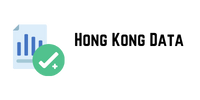Summary: Web security shouldn’t just be a concern for large businesses or websites with sensitive information. Every website owner, regardless of the size of their business, should take steps to protect their website from attacks and hacks. Proper security not only protects user data and the integrity of your website, but it also builds public trust and can help improve your SEO. By implementing security best practices like keeping your software up to date, using strong passwords, encrypting traffic with HTTPS, and protecting against DDoS, you’ll be taking important steps toward protecting your website and ensuring the continuity of your business.
Web security is one of the biggest concerns for businesses and website owners today. With cyber threats on the rise and attacks becoming more sophisticated, protecting a website from hacking has become a top priority to ensure not only the integrity of the website, but also user trust and business continuity.
In this article, we’ll explore how to protect your website from attacks and hacks, covering the most common threats and security best practices to keep your website safe.
Why is Web Security Important?
Web security isn’t just about protecting your website from hackers, it’s also about ensuring that your users’ and customers’ data is kept safe. Data leaks, phishing attacks and hacks can result in significant damage, including loss of customer trust, reputational damage and legal consequences.
Additionally, inadequate better roi examples and success security can negatively impact your website’s performance and hurt its rankings in search engines like Google. Compromised websites can be penalized in search rankings, resulting in a drop in organic traffic and, consequently, conversions.
Common Types of Attacks and Threats
Before we dive into protection strategies, it’s important to understand the most common types of cyberattacks that websites are exposed to:
1. SQL Injection Attacks
SQL injection attacks how to scale your e-commerce and generate quality traffic occur when a hacker inserts malicious commands into forms or URLs on your website to access or manipulate your database. This can allow the attacker to steal sensitive data or even damage your database.
2. Cross-Site Scripting (XSS)
In an XSS attack, a hacker injects malicious scripts into web pages viewed by users. These bfb directory scripts can steal cookies, capture login credentials, and redirect users to fraudulent websites.
These attacks can cause significant business disruptions and damage a company’s reputation.
4. Phishing
The goal is to trick users into revealing sensitive personal information, such as passwords and banking details.
5. Malware
Malware (malicious software) can be installed on your website without your knowledge.
How to Protect Your Website from Attacks?
>>>>>>>>>>>>>>>>>>>>lass=”yoast-text-mark” />>Now that we understand the types of threats, let’s discuss the measures you can take to protect your website from attacks and hacks.
1. Keep Software Up to Date
Many updates include security patches that address known vulnerabilities. If you don’t keep your software up to date, your website will be vulnerable to attacks that exploit these flaws.
<p&gt;2. Use Strong Passwords and Two-Factor Authentication (2FA)
Weak passwords are one of the easiest ways for hackers to access your website. Use strong passwords that include upper and lower case letters, numbers, and special characters. Additionally, implement two-factor authentication (2FA) to make it even harder for unauthorized access to your website’s admin panel.
5. Secure the Login Form
A website’s admin panel is one of the most common targets for attacks.. Also, avoid using the default username “admin” and change it to something unique and hard to guess.
6. Use a Web Application Firewall (WAF)
A WAF (Web Application Firewall) is a tool that monitors and filters traffic between the user and the server. It can detect and block common attacks, such as SQL injection and XSS, before they reach your website.
